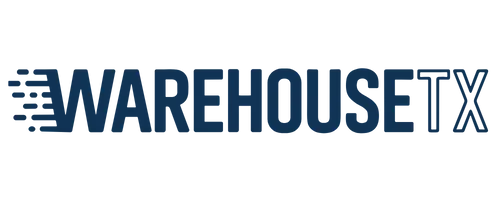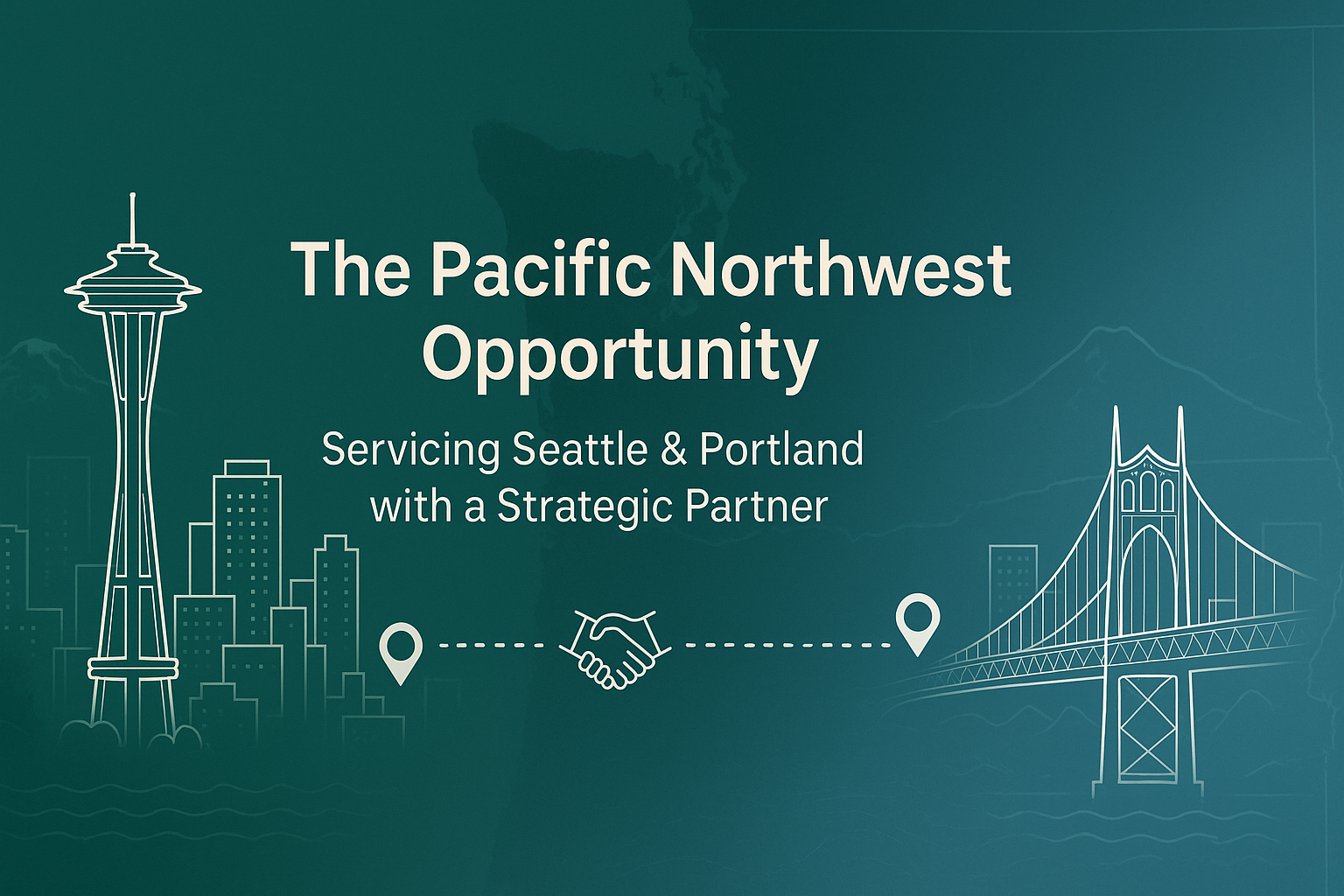The Pacific Northwest Opportunity: Servicing Seattle & Portland with a Strategic Partner
For eCommerce businesses, the Pacific Northwest presents a unique and lucrative market. With tech-forward cities like Seattle and creative hubs like Portland, the region boasts a high concentration of affluent consumers who value speed, efficiency, and sustainability. However, reaching these customers effectively from a distant warehouse can be a logistical nightmare, leading to increased shipping costs, longer delivery times, and a less-than-stellar customer experience. This is where a strategic 3PL (Third-Party Logistics) partner with a strong presence in the Pacific Northwest becomes not just an advantage, but a necessity for growth. By leveraging a local fulfillment network, you can unlock faster delivery, reduce expenses, and build a stronger brand presence in this key market.
This guide will dive deep into the specific challenges and opportunities of the Pacific Northwest, providing a comprehensive analysis of why a localized fulfillment strategy is crucial for success. We’ll explore the economic landscape, the logistical complexities, and the direct benefits of partnering with a 3PL expert like WarehouseTX to serve Seattle, Portland, and the wider PNW region.
Why the Pacific Northwest Market Demands a Local Fulfillment Strategy
The Pacific Northwest is more than just a geographic location; it’s a distinct economic ecosystem. From the tech giants in Seattle to the vibrant startup culture in Portland, the region’s demographics are a goldmine for eCommerce brands. But what makes this market so special, and why do traditional fulfillment models often fall short?
1. The High Cost of Cross-Country Shipping: A significant portion of online orders in the U.S. originates from the East Coast or Midwest. Shipping products from these locations to the Pacific Northwest involves long transit times and often, more expensive shipping zones. This not only eats into your profit margins but also puts you at a competitive disadvantage against brands with a local presence.
2. The “Amazon Effect” and Customer Expectations: Consumers in Seattle and Portland are accustomed to fast, reliable shipping, largely due to the influence of Amazon, which is headquartered in Seattle. They expect their orders to arrive in 1-2 days, not 5-7. Meeting this expectation is critical for customer satisfaction and repeat business.
3. Geographical and Logistical Challenges: The PNW’s geography, with its mountain ranges and specific weather patterns (like heavy rain and snow in winter), can create shipping delays. A local warehouse is better equipped to handle these regional challenges and navigate the most efficient shipping routes.
4. Sustainability and Brand Values: A growing segment of PNW consumers prioritizes sustainability. Shorter shipping distances directly contribute to a lower carbon footprint, aligning your brand with the values of your target audience. Partnering with a logistics company that offers eco-friendly packaging and efficient routing can be a significant competitive differentiator.
Comparing Fulfillment Strategies: A Detailed Analysis
To truly understand the value of a local PNW fulfillment partner, let’s compare two common fulfillment strategies: a single, centralized warehouse versus a distributed network that includes a presence in the Pacific Northwest.
Single Centralized Warehouse (e.g., in the Midwest)
- Pros:
- Simpler inventory management and control.
- Potentially lower warehousing costs due to economies of scale.
- Cons:
- High Shipping Costs: Products shipped to the PNW will fall into higher shipping zones, increasing your operational expenses.
- Longer Transit Times: A 5-7 day delivery window is common, leading to frustrated customers and increased cart abandonment.
- Poor Customer Experience: In a market where speed is king, a long wait can damage brand reputation and reduce customer loyalty.
- Increased Returns: Slower delivery can sometimes lead to a higher rate of returns, as customers may find a faster alternative or lose interest.
Distributed Fulfillment Network with a PNW Hub (e.g., using a WarehouseTX location)
- Pros:
- Reduced Shipping Costs: Shipping within the same region (Zone 1-2 shipping) is significantly cheaper. This can lead to substantial savings, especially as order volume grows.
- Faster Delivery: 1-2 day delivery is easily achievable, meeting and exceeding customer expectations.
- Improved Customer Satisfaction: Fast, reliable shipping boosts customer loyalty, increases repeat purchases, and generates positive reviews.
- Competitive Advantage: You can compete directly with large retailers by offering comparable delivery speeds.
- Scalability: A 3PL with a network of fulfillment centers allows you to scale your operations effortlessly as you expand into other regions. (See our guide on US-based fulfillment centers for more information on nationwide scaling).
- Cons:
- Initial Setup: Requires a bit more coordination to get your inventory distributed across multiple locations.
- Inventory Management: Requires a 3PL with advanced WMS (Warehouse Management System) to provide real-time visibility across all locations.
The clear winner for any eCommerce brand serious about the Pacific Northwest market is a distributed fulfillment model. The long-term benefits in cost savings, customer retention, and brand growth far outweigh the initial complexities.
Case Study: The “Evergreen” Apparel Brand
Let’s consider a hypothetical case: “Evergreen,” a sustainable apparel brand based in New York. Initially, Evergreen fulfilled all orders from a single warehouse in Pennsylvania. While this worked for East Coast customers, their PNW customer base was growing, and they started receiving feedback about slow delivery times.
Before Partnering with a PNW 3PL:
- Average Shipping Time to Seattle: 6-8 business days.
- Average Shipping Cost: $12-15 per order.
- Customer Feedback: “Love the clothes, but the shipping is too slow.”
- Result: High cart abandonment rate for PNW customers.
After Partnering with WarehouseTX (utilizing a West Coast fulfillment center):
- Evergreen strategically split its inventory, sending a portion to a WarehouseTX facility in the Pacific Northwest.
- Average Shipping Time to Seattle: 1-2 business days.
- Average Shipping Cost: $6-8 per order.
- Customer Feedback: “Unbelievably fast shipping! This is my new go-to brand.”
- Result: A 35% increase in repeat purchases from the PNW, and a significant drop in cart abandonment. The brand’s reputation for speed and efficiency grew, strengthening its foothold in the region.
This case illustrates the tangible ROI of a smart, localized fulfillment strategy. It’s not just about logistics; it’s about business growth.
Essential Questions to Ask Your Potential 3PL Partner
Not all 3PLs are created equal. When evaluating a partner to service the Pacific Northwest, ask these key questions to ensure they are a good fit for your business:
- Do you have a physical presence or a strong partner network in the Pacific Northwest? (e.g., Seattle, Portland, or nearby key hubs).
- How does your WMS provide real-time inventory visibility across multiple locations?
- What are your average pick, pack, and ship times for orders?
- Do you offer custom packaging solutions that align with our brand and sustainability goals?
- What is your approach to return management and reverse logistics? (This is crucial for a smooth customer experience).
A reputable 3PL like WarehouseTX will have clear answers to these questions and be able to demonstrate their expertise in serving regional markets. Their expertise in areas like warehouse & storage and packaging ensures a seamless operation from start to finish.
Key Takeaways: Building Your PNW Strategy
Navigating the Pacific Northwest market requires a thoughtful and strategic approach. Here are the core benefits of building a localized fulfillment strategy with a trusted partner:
- Cost Efficiency: Drastically reduce shipping costs by minimizing long-haul transit.
- Speed & Satisfaction: Meet the high expectations of PNW consumers with 1-2 day delivery.
- Enhanced Reputation: Build a brand known for its reliability and efficiency.
- Competitive Edge: Outperform competitors who are still relying on a single, distant warehouse.
- Scalability: Position your business for future growth into new markets by leveraging a robust, nationwide logistics network.
The time to optimize your logistics is now. By making the strategic choice to partner with a 3PL with a strong PNW presence, you can turn a logistical challenge into a powerful opportunity for growth. It’s a move that saves money, delights customers, and builds a foundation for long-term success.
Frequently Asked Questions About PNW Fulfillment
What is a 3PL and why is it important for my business in the Pacific Northwest?
A 3PL, or Third-Party Logistics provider, is a company that helps you manage your supply chain. This can include warehousing, inventory management, and order fulfillment. For the Pacific Northwest, a 3PL is crucial because a local presence allows you to ship products faster and more affordably to customers in key cities like Seattle and Portland, giving you a competitive edge.
How can a fulfillment center reduce my shipping costs to the PNW?
Shipping costs are based on zones, which are determined by the distance from the origin to the destination. By using a fulfillment center located on the West Coast, your shipments to Seattle and Portland will fall into lower, more affordable shipping zones. This can lead to significant cost savings compared to shipping from a distant, centralized warehouse in the Midwest or East Coast.
What are the benefits of a distributed fulfillment network?
A distributed fulfillment network involves storing your inventory in multiple locations across the country. The main benefits include faster delivery times to a larger portion of the population, reduced shipping costs by utilizing a regional shipping strategy, and a more resilient supply chain that is less vulnerable to disruptions in a single location.
Does using a 3PL with a local presence affect my brand’s carbon footprint?
Yes, a local fulfillment strategy can significantly reduce your brand’s carbon footprint. Shorter shipping distances mean less fuel consumption for transportation. For eco-conscious consumers in the Pacific Northwest, this is an important factor that can positively influence their purchasing decisions and brand loyalty.

